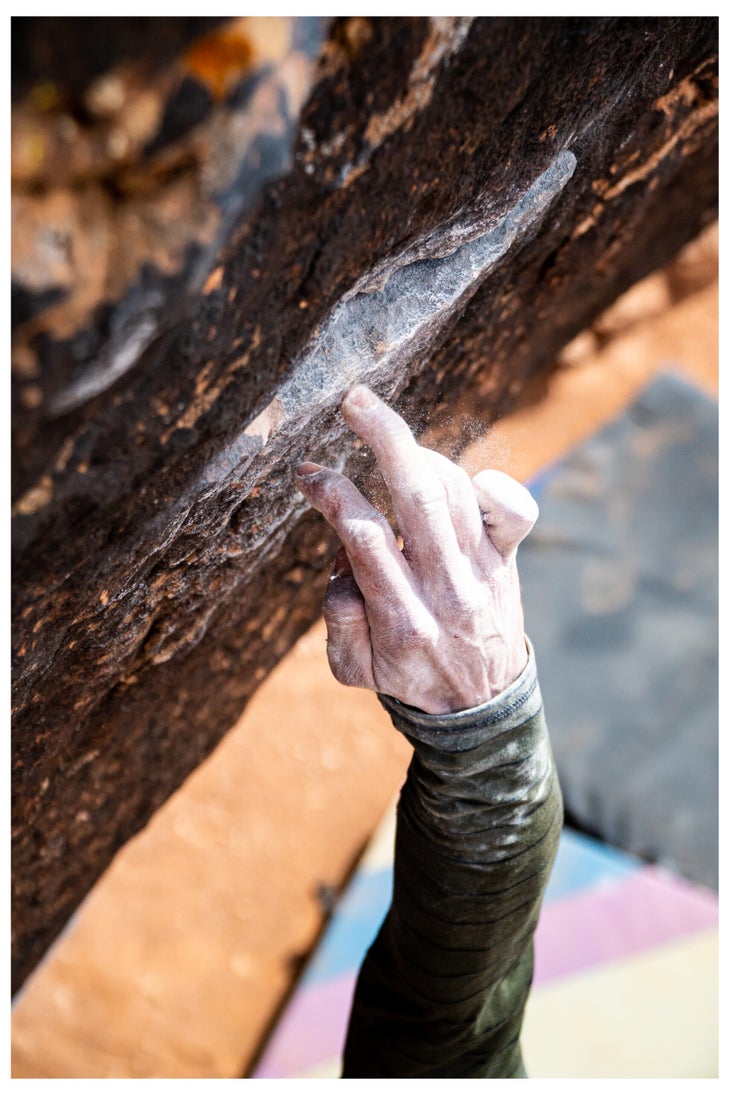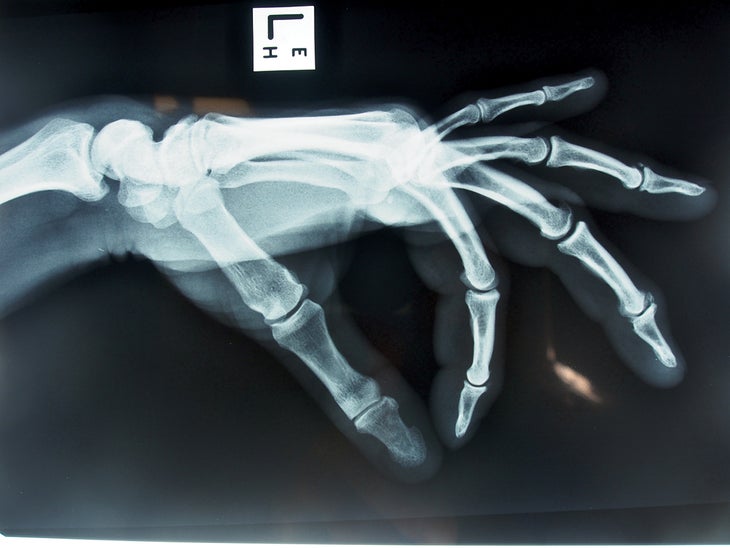You Climb? You Are Probably Going to Get Arthritis.

I’m 40 and have osteoarthritis in my fingers. I have the classic symptoms with pain, stiffness, inflammation and bone spurs. I’ve reduced my climbing to one to two days per week and my physical therapist told me to stretch and climb less. Should I give up climbing so my fingers are not completely wrecked when I’m older?
—Bryan Paine
The Doctor Says
Middle age has arrived, and along with it a dark, foreboding presence—the ineluctable path of cellular degeneration. Joint degeneration is the glitch in the matrix of every life styler who uses sport as the medium to experience the world. At some point in your late 30s or early 40s the incumbent idea of continuous progression is ingloriously debunked, and in its place arrives the horrendous notion of slow decline. Hurry up, the roses are dying.
Osteoarthritis is defined by degeneration of the joint surface known as either hyaline or synovial cartilage. Although acute and chronic injury can speed up the onset of osteoarthritis, sport in general is ironically protective even at a fairly intense level. Athletic activity causes cartilage to become more robust and muscles to offer greater stability, thereby affording the joint some resistance. This has been amply demonstrated in runners in particular. If, however, you add a single serious injury—say, an anterior cruciate rupture (the ACL is one of the main stabilizing ligaments in the knee)—you are almost certainly looking down the barrel of earlier degeneration. Translation: Snapping pulleys and ligaments around the fingers will probably not serve you well, nor will chronic damage inflicted by inordinately large mechanical loads on fairly small joint surfaces.
All cells are enfeebled by age-related decay, a state of degeneration due, quite simply, to accumulated cellular assault. Musculoskeletal cells, those in your joints and muscles, are the first to bleep on the radar of perceptible change. Joints become creaky, painful and stiff, and muscles no longer fire as you would like. What starts out as predictable denial will eventually morph into strategic management, whereby you learn to avoid certain aggravating factors in a bid to accommodate those you can’t (or at least don’t want to).

Do-It-Yourself Arthritis Treatments for Rock Climbers
Fish oil. I have many patients with various forms of arthritis, ranging from the more nasty inflammatory types, such as rheumatoid, to the garden variety osteoarthritis, where high doses of fish oils have helped alleviate symptoms, albeit they exude a signature body odor. In reality, current research suggests that a low dose is actually more effective in osteoarthritis (go figure) and has the added benefit of enhanced partner comfort. Get on it!
Glucosamin. The galactic enthusiasm that put glucosamine sulphate (GS) on the shelves of every supermarket virtually overnight has eased somewhat in the last decade, but evidence still firmly points to its ability to ease pain and improve function, with some radiological studies (X-rays) demonstrating that certain GS preparations can slow osteoarthritis progression.
Green Lipped Mussel extract. The eponymous mollusk, derived from a mollusk found on New Zealand shores, may well gezump fish oil in terms of efficacy if the limited research is found to be reliable. Combine them with a dozen oysters, and it will feel like yesteryear!
Snake oil. I recently received a marketing email from a very polite Becky that was titled “Get Your Stiffy Back.” If it seems unbelievable, it probably is! Osteoarthritis is no different to impotence in that desperate people want to believe that the remedy is both easy and fantastic. Conduct your own research with a good dose of skepticism.
Stretching. Simple—a tight joint wears out faster. Stretch joints as if turning your finger into a pretzel. You may find a demonstration video on YouTube somewhere from a time when my voice sounded younger, and I didn’t need to follow my own advice.
Strength. Although strength conditioning sits at the citadel of osteoarthritis management, I doubt too many climbers, in comparison to non-climbers, need to improve their finger strength. A geriatric with knee arthritis, on the other hand, will improve function and slow the progression of osteoarthritis by enhancing leg strength.
Warm up slowly. Creaky joints are usually less so when they are warm. Doubling your warm-up routine will greatly add to your climbing experience, as will pulling on bigger rather than smaller holds. That is, steep juggy routes will typically be less aggravating for tender finger joints than others.
Pain management. Pharmaceutical pain management has its place, but use it as sparingly as possible, and stick with Tylenol-type products rather than anti-inflammatories. The latter have shown to be no more effective and yet come with significantly more potential for serious side effects, namely bleeding in the gastrointestinal tract and heart failure.
Other sports. The simple fact is some people will not be able to climb because finger-joint pain will become prohibitive. In the scheme of bad shit, that’s not so bad. You can try dropping the intensity, but if climbing doesn’t work out, there are other sports that will blow your hair back, if you still have any.
Related:
Dr. Julian Saunders specializes in sports injuries and climbing in particular. He is available for online consultation at http://drjuliansaunders.com/

The post You Climb? You Are Probably Going to Get Arthritis. appeared first on Climbing.

